How to use Dry Ageing Steak Banquet Bags
Instructions for use in Dry Ageing steaks, complete with diagrams, info, tips and troubleshooting.
Try ageing your own steak at home today with our dry aged steak bags! It’s easy, fun and tastes amazing!
Wholesale banquet bag quantities available for foodservice customers. We offer high-quality Wholesale Banquet Bags.
Misty Gully Dry Age Steak Banquet Bags feature award-winning Danish technology that allows for the safest and easiest way for you to dry age your own steak at home. The material of the bag creates a bond with the natural proteins in meat, allowing for moisture release and oxygen exchange, free from the risk of contamination.
Why dry age? Dry aging meat allows for the natural flavours to become concentrated as well as the tenderization of the texture. In just 3 to 4 weeks, you can create steaks that will brim with flavour and melt in your mouth. All that’s needed is a fridge and a vacuum sealer!
Step 1 – Choose Your Meat
Select your meat. A good quality, fresh, full piece of muscle meat works best. Choose a piece that has good marbling or fat cap for the richest flavour. Before placing your meat in your Misty Gully Banquet Bag, do not wipe the meat dry; keep a reasonable amount of blood on it as the proteins in will help to form the bond between Banquet Bag and meat.
Step 2 – Position Your Meat
Turn the opening of the bag back on itself so you can put the meat inside without touching the opening of the bag. Place the meat in the Banquet Bag and position the meat so that it is not touching the bottom or the sides of the bag. Doing this will allow the air to flow out of the bag without creating pockets of air. There should be at least 12 cm space between the opening of the bag and the meat.
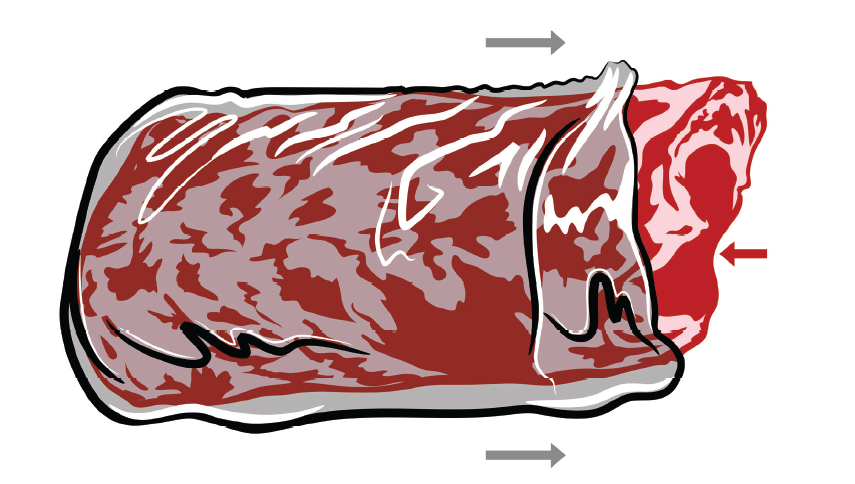
Step 3 – Channel Helper
Cut a portion of Channel Helper about 10cm x 10cm. Fold vertically on itself to end up with a band-aid like strip. Insert the Channel Helper into the opening of the Banquet Bag. It should run in line with the top and stick out of the bag opening. Position the bag into your vacuum sealer. Make sure the channel helper is placed over the vacuum.
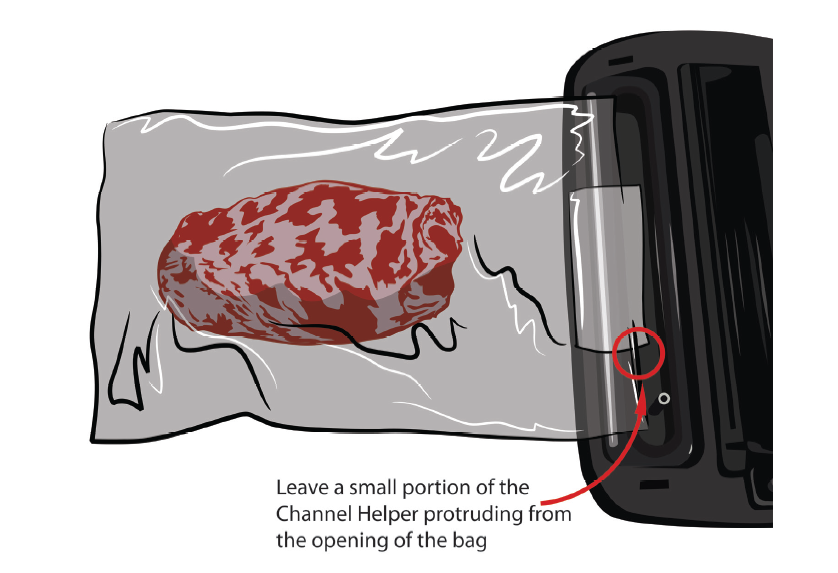
Step 4 – Vacuum Seal
Set to your vacuum sealer to gentle / normal / moist (if available) and press start. If the area around the opening of the bag starts to flatten too early, preventing proper suction, massage the area around it to let the air flow again to ensure that the air at the bag of the bag around the meat is pulled. When the bag is tightly holding the meat, you can activate the heat seal. Ideally you want firm contact with the meat. The bags will form a successful bond with ~70-80% coverage meat to Banquet Bag. Due to their design, Banquet Bags may require you to seal two to three times in the same spot to seal properly – they are different from a regular Cryovac bag in this regard. Once the machine has finished sealing, allow it to cool before slowly lifting the lid. Add a secondary seal outside the first seal as a failsafe.
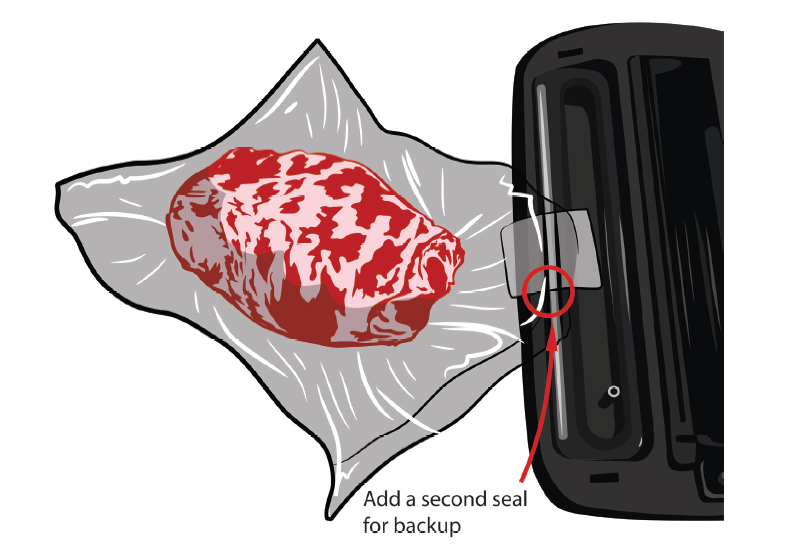
Step 5 – Refrigerate
Place your Banquet Bag on a cooling rack in the fridge and leave for 14-28 days (you can leave it for up to 45 days). If you notice that the bag has become significantly loose and pulled away from the meat in the first few days, the bond has been lost. You will need to repeat the process with a new banquet bag.
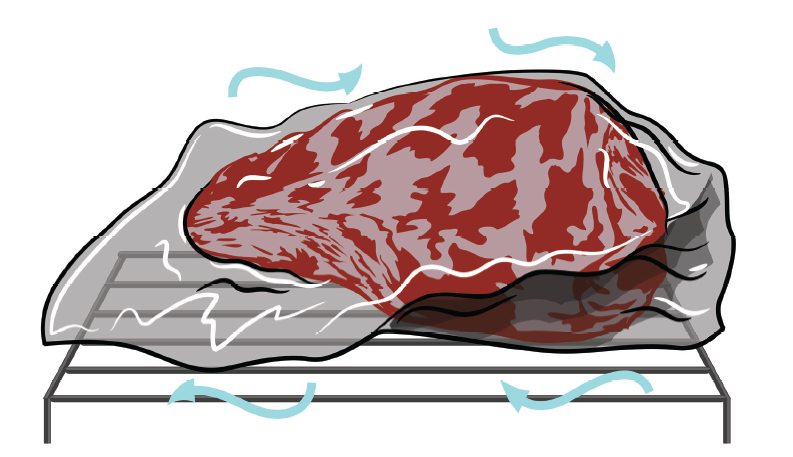
Step 6 – Final Preparation
Once you’ve aged your meat for the designed time period, remove the bag, cut into steaks and trim off the hard pieces of meat the surface. Cook to your liking. Be aware that you will not get the same release of moisture as a fresh steak. A slow consistent temperature is a must when cooking your Dry Aged steak.
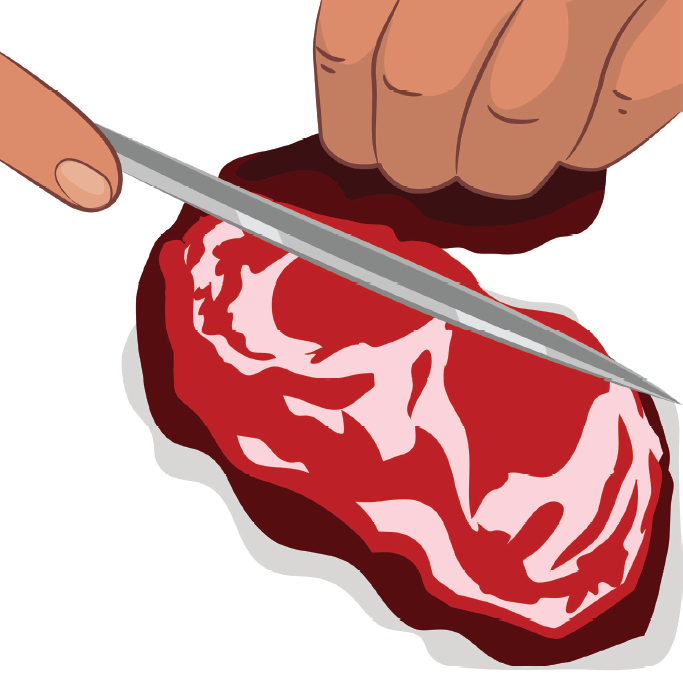
Troubleshooting
The bag is too big for my vacuum sealer.
Cut the corners off the top of the bag and seal them to make the opening narrow enough to fit in your vacuum sealer. Refer to the diagram in Step 4 which shows an example of this method.
How much air should I vacuum the bag prior to sealing?
You are trying to achieve a very close bond between the bag and the meat. You do not need to draw the air out to a point where the meat changes shape. As long as you have a close, tight coverage across at least 80% of the meat, you should be able to easily form a bond with your Banquet Bags and meat.
What vacuum sealers do you recommend?
A channel vacuum sealer that gives you the option to extend the sealing time for moist seals and has a slow vacuum option is best. Nozzle-type vacuum sealers are cheap some versions do not have a strong vacuum. Sunbeam Food Saver models work particularly well with Misty Gully Banquet Bags.
How do I stop blood from getting into the sealing area when vacuuming?
Make sure you refer to step 2 and fold the bag back onto itself before placing the meat inside the bag. Chilling your meat prior to using the vacuum sealer will help to slow the flow of blood as well. Position your meat as far from the opening as possible and to one side. We recommend you try to leave at least 12cm between the meat and the opening on the bag. If blood does enter the opening, select a longer sealing time and make a secondary seal as a failsafe. You may need to do multiple seals in the same place.
